Rabbit Farming
With few exceptions, rabbit farming on a small scale,
or even not-so-small, is possible no matter where you live.
This page is our rabbit husbandry hub page, with links to the nitty gritty of providing excellent hands-on care for livestock rabbits, whether a hobby rabbitry such as a show rabbit herd, a homestead herd, or a commercial enterprise.

Hobby and Homestead
"It's a herd, not a hoard"
Show rabbits are also classified as livestock. Breeders typically keep enough representatives of their chosen breed in their rabbitry to continue improving on the quality of the animals.
If you're raising meat rabbits in your backyard or country acre for your own use and that of your pets, your rabbit breed choices will expand to fit your preferences and needs. Just know that, while "all rabbits are made of meat," some breeds, even if they're big ones, might not yield as much meat as other breeds.
You will likely need rabbit pedigrees for your show rabbits and meat rabbits.
Starting your Rabbitry or Farm
To start out farming rabbits, in the big city or in the country, your best choice is to start with just a few rabbits at first. This is in order that you can learn the needs of your rabbits and get comfortable with the whole process so that any mistakes don't result in irrecoverable losses.
Getting Started:
- Start with a buck and two does.
- The does will each need TWO cages measuring 36 inches by 30 inches. One cage will house the doe, and her litter up until 6 weeks of age. At this point the cage will be getting crowded. Move the doe to the second cage, which will wean the kits without undue stress. The kits will remain in the first cage until market day.
- Butcher when the young rabbits reach 4.5 to 6 pounds. Market day typically falls between 8-12 weeks of age, depending on breed, quality of feed, and specifications of the market.
- Down the road, when it’s time to think about replacing your brood does, you will want a couple more cages. Retain a couple large and healthy young females out of your litters, and grow them to 7-8 months. At this point you can retire the older doe, and put the new doe into service.
- Hopefully you won’t need to replace the buck for several years.
As your confidence and understanding of rabbit husbandry grow, you will be able to make your next choices and decisions from a position of expertise.
Examples of rabbit farms here.

House the Herd
Simple and clean is best for your rabbits and their health.
Set up your barn or rabbitry in such a way that your list of chores will be shorter, not longer.
- Single tiers of cages are always easier, if space allows
- Place worm beds under the cages. This adds the possibility of another income stream to the bottom line.
- Ensure excellent air circulation to minimize respiratory distress or ammonia odor build-up. (Worms and fly predators help to safely control smells)
Each rabbit will need its own cage.
Consider building your own detachable rabbit cages and rabbit hutch frames. We offer a few free plans, and you can purchase our full collection of enhanced and illustrated plans.
More info at Rabbit Hutch Building Plans and at World of Raising Rabbits
Building your own rabbit cages allows you to increase your rabbit farming project at your own rate. When you run out of rabbit housing space, you can build more.
At some point, a growing commercial operation or even the serious rabbit raiser may wish to purchase manufactured cages, or invest in a commercial-grade cage system, complete with built-in nesting boxes and manure disposal.
FYI: Hostile Hare offers excellent quality cages and cage set-ups.
Where can I find top quality rabbit cages?
From Raising-Rabbits, of course!
Raising-Rabbits has partnered with Hostile Hare to bring you cages that exceed our rigorous rabbit housing standards.
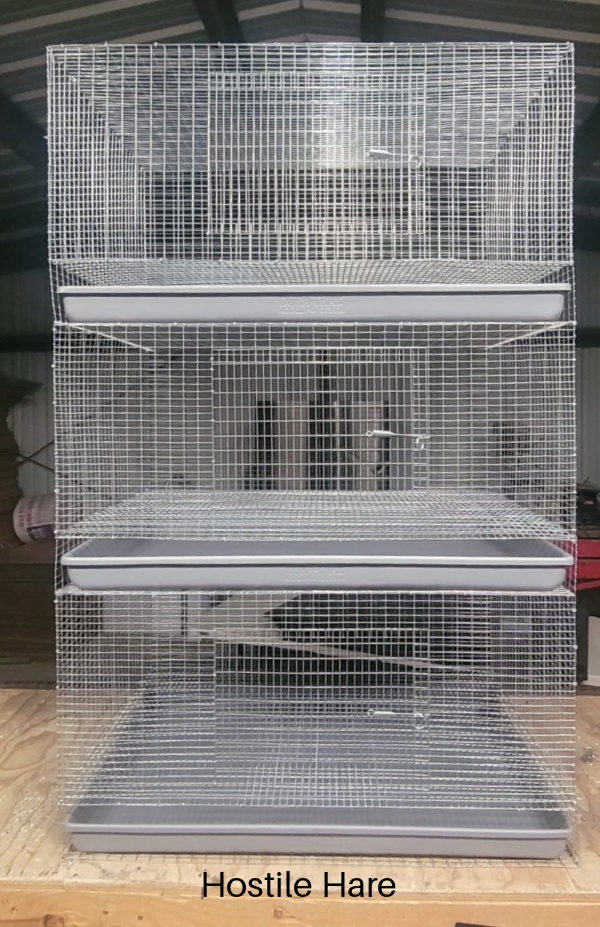
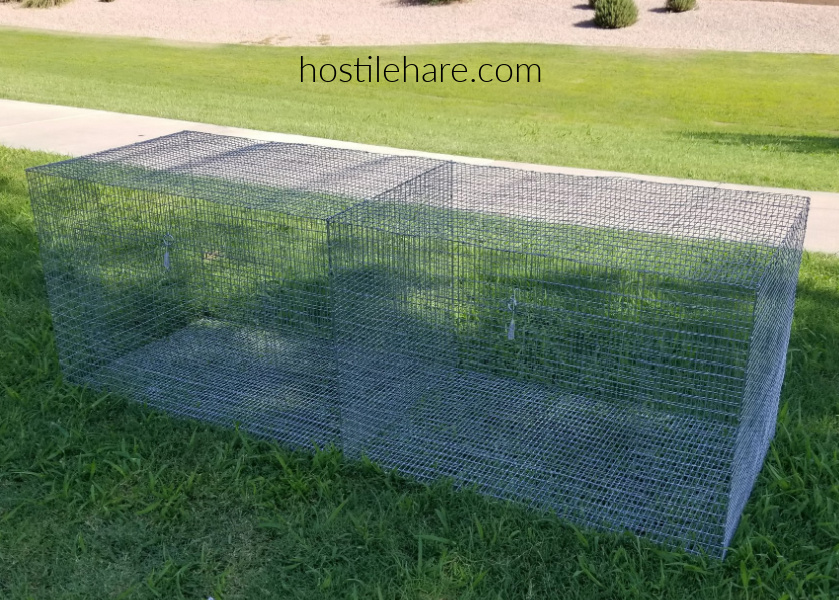
We do not manufacture cages, but we sure know a well-built, rabbit-safe cage when we see it! And we think these Hostile Hare cages will serve you well for years.
Predator-Proof! Most are constructed completely with baby-saver-sized wire (1/2 x 1-inch), from top, sides, to bottom. Rats, snakes, and even mice will clearly get the "no trespassing" message.
Kit-Safe! You might escape the nest box, little one, but you cannot escape the cage! This means fewer lost bunnies, and better outcomes for your rabbitry.
Singles and Multiples to fit your needs! Hostile Hare cages are perfect for pets, homesteaders, and breeders. Available as single and multiple cages and configurations, even complete turn-key rabbitries in several sizes.
Visit Hostile Hare for more Info
Click the Logo or this Link to Purchase Now
Are Rabbit Cages a Must?
For hobby breeding or any kind of commercial rabbit enterprise: Yes. It is the only way to manage a breeding program, or to keep the rabbits safe, healthy, and reproducing. Any breakdown in the process results in red ink on the bottom line.
More on Rabbit Cages here.
How about raising rabbits in colonies?
There are whole online forums filled with people who colony-raise their rabbits. Here's a group that I've been a part of for several years:
https://www.facebook.com/groups/colony.raising.rabbits
They love doing it, and it seems wonderfully humane. What's not to love?
Rabbit colonies, unless extreme measures are taken, typically result in escapees, disease and parasites, death by fighting, loss of kits for many reasons, and predation of up to 70% of the offspring, possibly. (75% offspring losses are typical in the wild.)
I guarantee there are no colony-raised commercial operations. If you lose half your market animals to the local feral or wild predators and all their buddies, it'll be YOU going hungry.

Rabbit Herd Health
Rabbit Diseases
Understand and manage the most frequently encountered rabbit
diseases, parasites, infections, and non-infectious challenges to rabbit
health.
Keep Your Rabbits Healthy
Barn conditions and rabbit husbandry practices that contribute to herd health.
Lactation and Condition Enhancers: Black Oil Sunflower Seeds, available through Amazon, Bunny Branola, available through the Raising-Rabbits Store.
Raising-Rabbits offers a number of resources
Black Oil Sunflower Seeds - Excellent Source of Extra Fats
-- 25lb Black Oil Sunflower Seeds (ad)
Bunny Branola - Ultimate Rabbit Nutritional Supplement, and Treat!
What rabbit wouldn't love Bunny Bran??!
One Tablespoon per day of this tasty and nutritious rabbit food supplement sprinkled on their regular food is all a bunny needs to be happier and healthier.
- Bunny Branola makes fur softer and shinier, teeth and tummies healthier, and helps relieve stress due to scary things like barking dogs, new situations, or ultra cold winters.
- Bunny Branola is a wonderful rabbit superfood supplement for pregnant bunnies and growing bunnies.
Raising-Rabbits: Home of
The Rabbit Raising Problem Solver
All your Answers in One Book!
Learn More Here
$22.62 - Order Here

Rabbit Farming Chores
Conditioning
Rabbits for Show
The same conditioning mix will also improve your pregnant and/or
lactating rabbits' nutritional status.
Cooling Rabbits
Keeping rabbits cool in hot climates is essential for the survival of your rabbits.
Outdoor Rabbits in the Winter
Can rabbits handle freezing temps? Yes! Here are ways to keep rabbits fed, warm, and safe during wintertime.
Fly Control (Keep Your Neighbors Happy!)
Rabbits are quiet, timid, and unobtrusive, making rabbit farming very easy on the neighbors.
But whenever animals and their droppings are involved, one runs the strong potential of also breeding FLIES. This does not make the neighbors happy.
Here are some very good ideas for controlling the fly population; we at Aurora Rex Rabbit Ranch successfully implemented all of them:
- Keep the droppings raked up and tilled into the garden or moved to a covered compost heap
- Set up worm beds under your cages
- Keep a few chickens, ducks or both, to snap the flies out of the air and to devour the fly maggots and other insects on the ground before their numbers get out of hand. There's a huge benefit to this last suggestion - "free" eggs!
- Fly Predators are a fabulous, safe, and very effective way to wipe out your fly population. It's safe for both humans and animals, and are non-poisonous and completely natural. Plus, Fly Predators CAN be used successfully in conjunction with chickens to nearly eradicate flies.
Control Ammonia Levels
Ammonia fumes in animal urine can be dangerous to your animals, so eliminating ammonia odors is essential. And all the better if it's easy to do. With Spalding Labs’ Bye Bye Odor, rabbit farming is that much easier - just ‘spritz spritz spritz.’ Voila, odors minimized.
Learn more at Ammonia Levels, or...
Rabbit farming results in lots of manure. Some outdoor systems allow the rabbit manure to fall to the ground, where it can be shoveled before the piles grow too large.
But, we wanted to bring your attention to an
ingenious manure collection system that our friend Lisa in Connecticut set up. Maybe something like this
could simplify your life, too?

Protect the Herd from Rabbit Predators
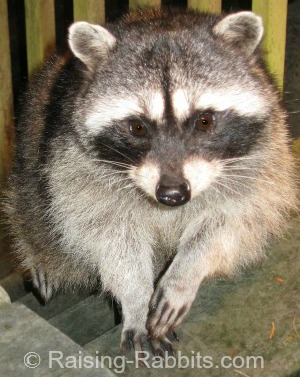
Do not for a minute underestimate the capability, brute strength, and determination of raccoons, coyotes, foxes, weasels, bears, eagles, hawks, mountain lions, snakes, rats, and other predators to rip a flimsy rabbit hutch to pieces and help themselves to the rabbit(s) inside the hutch.
The Predator Prey relationship goes only one way. Pictured: this raccoon was looking to end the life of a rabbit or chicken on the premises, and would return later for seconds....

Commercial Rabbit Farming
The following three guest posts were written by the very experienced Ms. Carla Clark, owner of Rabbits4U, a commercial rabbit operation and breeder network that supplies raw frozen rabbits for pet dogs and cats.
If you're ready to take your rabbit enterprise to the next level, you can now learn from Ms. Clark's expertise:
- Raising Rabbits for Meat: Intro to Commercial Rabbit Production
- Profitability in Commercial Rabbit Production
- Feeding Commercial Rabbits for Rapid Growth
Children raised on farms frequently choose to join in the family by learning how to take care of the livestock, including rabbits, chickens, turkeys, even pigs, sheep and cows. Commercial rabbit farming is included in the list of ways children can learn to take care of animals.
At the end of the year - in the summertime - comes the Junior Livestock Show, where the kids can show off their very healthy and happy animals, selling them at a premium to help pay for their expenses. It is a great way to learn how agriculture can pay them for their efforts.
Meat Rabbit Breed Choices
Choose a meat rabbit breed with rapid weight gains and adaptability to your climate, breeds that are well known for their commercial potential - large litters, excellent mothering, prepotent bucks, kits that reach 5 pounds in 8 weeks. The following breeds are very good starting points:
- New Zealand Whites
- Californians
- Production Whites (Altex or other commercial crosses containing the blood of the best commercial breeds)
- A combination of these
Some strains of Silver Fox, American rabbits, Satins, and other meat rabbit breeds may also compete well. Learn the strain's performance record before incorporating it into your stock, as the success of a commercial rabbit production
enterprise will depend on getting many fryers to market by 8 weeks of age.
Like cattle ranchers and chicken or egg ranch farmers, the commercial rabbit farmer is in it to put food on the family table. It is possible to make a living, as long as there are enough rabbits in the herd, and the processes are optimized.
- Rapid reproduction is in a rabbit's DNA. They're rabbits - they multiply like rabbits.
- Optimum rabbit welfare is a rabbit farmer's chief focus, because it is good for both the rabbit and the business.

Maximize Your
Rabbit Farming Products
Meat, Fur, Wool, and more
Rabbit farming is not a "Get Rich Quick" scheme. But the more products that your rabbit farm can market, the more likely it is that you may eventually make your hobby a profitable one, and maybe be able to quit your day job one day if you have the passion for rabbit farming.
Note that there may be state and federal regulations that apply to your enterprise.
Be sure to do your due diligence and educate yourself as to the applicable laws and regulations in your state, province, or region.
You Can Sell...
- Fryer rabbits. Market fryers are sold live by weight to a meat processor
- Meat. Sell whole or cut up, frozen or fresh. Meat can be sold by the unit or by the pound, and prices vary by area.
- Breeding Stock. Other breeders or individuals new to rabbit farming may be looking for high quality pedigreed and healthy rabbits that are excellent representatives of their breed.
- Homemade Pet Food. Cats are considered obligate carnivores with digestive systems that rely solely on raw meat. Dogs are very nearly so. Feed them a species-appropriate diet, and their health improves, sometimes dramatically.
See Raw Rabbit. (Would you be interested in raising meat rabbits for the pet market? Let us know!) - Rabbit pelts. Rex pelts are in high demand in the USA and in Europe. The big name furriers need "bundles" of at least 40 matching pelts in order to craft their fine garments.
Rex is not the only sought after breed. White, black, chinchilla and wild agouti pelts of various breeds are also desirable.
The most valuable pelts are the senior primes, harvested between October and March (in the Northern Hemisphere) when the adult winter coats are fully prime (no sign of molt).
- Sell 'green' (preserved but not tanned) pelts
- Sell your professionally tanned pelts to a furrier
- Tan your own rabbit pelts (or have the professionals do it) and utilize them yourself by making and marketing the garments, mocs, blankets, pet toys (and more)
- Wool
(fiber). Angora wool can be sheared or plucked approximately every three months. Sell
the loose wool, or spin it and sell the fiber. Or, create your own
angora products such as caps, shawls, sweaters, socks and blankets for sale.
For more info on wooled breeds, see Angora
Rabbits, and German Angoras.
- Manure/fertilizer/mulch. There's a plethora of uses for the brown gold
that accumulates (rapidly!) under the rabbit cages. Sell it by the used feed bag. Or sell it by the pick-up load -
gardeners LOVE it. Sell it composted or
fresh. Offer a low "U-Shovel" rate to your gardening
buddies.
- Fresh Vegetables. If you have a vegetable garden on which you've spread copious amounts of rabbit manure, you're likely to reap an abundance of veggies. You can sell your surplus fresh vegetables at the local Farmer's Market or to friends and neighbors.
- Worms.
Several species of local earth worms may migrate into the piles of rabbit droppings. Large, well-fed
earthworms and red wrigglers (and whatever other name they go by in your
area) are valuable to fishermen and to others wishing to populate their
own compost or worm bin projects.
- Rabbit Recipes and cook books. Compile your favorites into a cookbook and market it with your other products.

Rabbit Farming: Market Day
Process the Rabbits
This is a hard topic; do we need to talk about it??
Does the idea of killing and butchering rabbits gross you out?
Are you of the opinion that butchering rabbits is cruel? That humans don't need meat? That we're herbivores by nature?
If so, then I marvel that you've read this far.
Here is the position of Raising-Rabbits: Humans are omnivores that need to eat a certain amount of animal-based nutrition regularly, and this is why we accept using rabbits for food.
- Humans have been meat-eaters throughout the entire time frame of recorded human history, and our digestive system is still a meat-eating one.
Humans are healthiest for the long term when we eat at least some part of our diet in (grass-fed) animal protein and animal-based fats on a regular basis.
How do I know? Because there is not a single human on this planet that can digest the complex cellulose in plants. And in fact, neither can herbivores. - True herbivores have digestive systems with either a hind gut or multiple stomachs that utilize armies of bacteria and other life forms to do the digesting for them. These are mechanisms that humans with their single stomachs will never be able to employ. Humans don't have the anatomy OR physiology that herbivores have.
- Eating only plants eventually exposes humans to insurmountable nutritional shortfalls that can become crippling or fatal, if one does not consume compensating nutritional supplements.
It cannot be considered cruel to butcher and eat meat when consumption of animal protein is a requirement of the human body for long-term health.
Okay! Are we good?? Here are the pages on Raising-Rabbits that will help you with processing your rabbits:
Killing Rabbits: Butcher your meat rabbits, euthanize your culls.
Slaughtering Rabbits: how to remove the rabbit pelt, clean the rabbit carcass and cut up the rabbit meat.
Learn more about animal rights, animal welfare, and human health here.
Raising rabbits? Consider a membership to the American Rabbit Breeders Association
Add your Comments or
Share your Experiences!
Your comments or experiences can help others who read them. So, comment away, and if you have pictures, you can post up to four of them. Pictures are always helpful.
(Have questions? Perhaps your question was already asked, and answered, below. If not, Karen has answered hundreds of your questions in her book: Rabbit Raising Problem Solver, covering every aspect of pet rabbit and livestock rabbit care as well as rabbit health and disease. We recommend it!)
Comments from Other Visitors...
Click below to see additional posts that other visitors have made to this page...
Replacing does when time 




I am just getting back, after many years, into the meat rabbit business. I plan to keep it small and mainly for our own use. I am starting out with one …
Rabbit Fryer Butcher Age 




Raising Californian Rabbits for the freezer. We are first time rabbit owners and have no idea what the recommended size/weight/age to harvest the babies? …
Optimum nesting structures 




I have had several problem with nesting with my rabbits in that many of my clutches fail because of cold or rain. Obviously my nests are outside as it …
HAVING BABIES 




We bought our New Zealands with the intentions on raising them for meat. I was told that they could not have kits until they were 8 to 10 months old. About …
Doing Rabbit Farming Research 




I am doing research on rabbit farming. I am retired and have over an acre of land in Mobile, Alabama near Mobile Bay. There are lots of wild rabbits around …
My NZ Doe (Birthing) Not rated yet
My New Zealand doe has given us kindlings of 6 to 8 kits when the weather gets warmer. She was quite large during this last pregnancy. She nested and pulled …
Rabbits for Dog Food Not rated yet
I am considering raising rabbits to feed to my dogs as a raw diet. Does anyone have experience with this? Do you dress the rabbits before feeding?
…
Where to find rabbits for meat production Not rated yet
The only rabbit sources I have found are for show rabbits and seem to be fairly expensive. Where do you suggest we search for rabbits to start our food …
Tanning your own pelts Not rated yet
I was just wondering if you ever tan your own rabbit hides to make things out of. I'm considering doing it just for my little family, thought it was …
Bethany Boyd Not rated yet
Just wanted to post a pic of our newest member of the family, our red NZ, should give us some nice show buns for 4H, (her last litter had a trio that entered …
Suspicious please help! Not rated yet
I was worried about two of my mixed breed rabbits today. As I was trimming their nails I noticed they had snot! And it was stringy, It doesn't appear as …
Double-Value Guarantee
Our policy is to always OVER-deliver
on value,
which is why your purchase is fully covered by our
Double-Value
Guarantee.
Go ahead - take any of our e-books for a test drive. Peruse our detailed informational and educational e-books. Examine our plans for building rabbit cages, runs, or metal or PVC hutch frames. Check out the Rabbit Husbandry info e-books.
If you aren't completely satisfied that your e-book purchase is worth at least double, triple or even quadruple the price you paid, just drop us a note within 45 days, and we'll refund you the entire cost. That's our Double-Value Guarantee.
Note: When you purchase your
e-books, they will be in PDF format, so you can download them to any device that
supports PDF format. We advise making a back-up copy to a drive or cloud
account. If the books are lost, you can also purchase another copy from Raising-Rabbits.
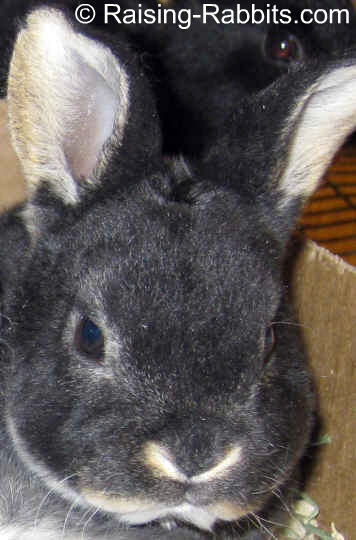
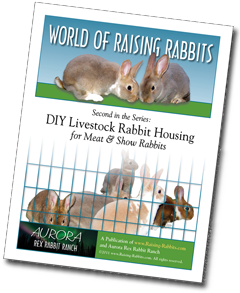

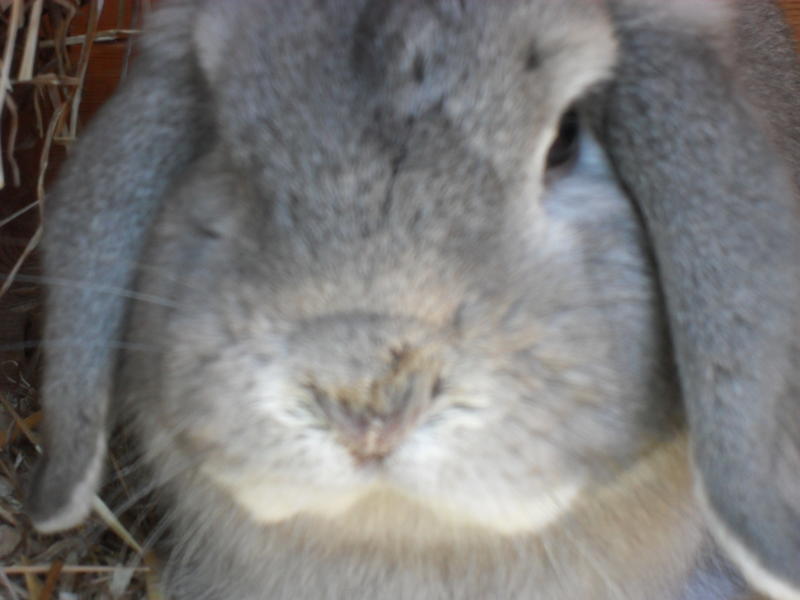


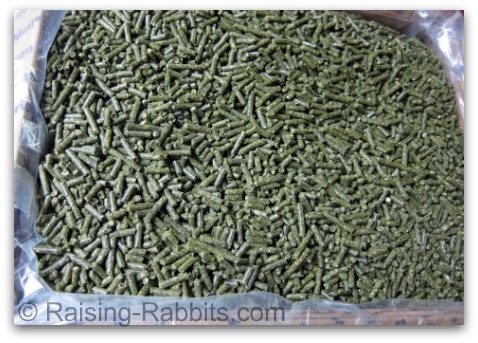
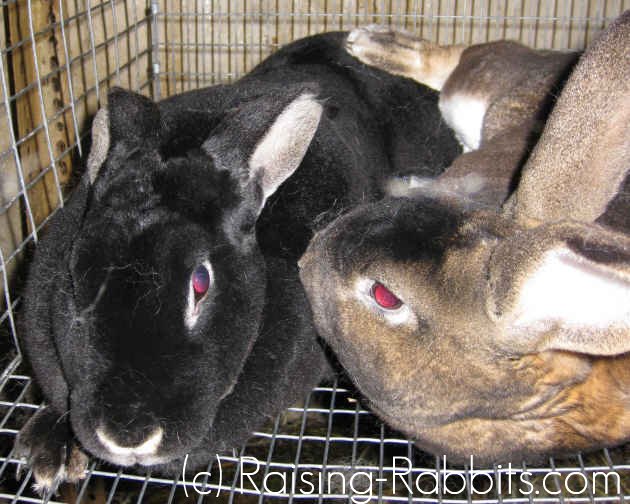


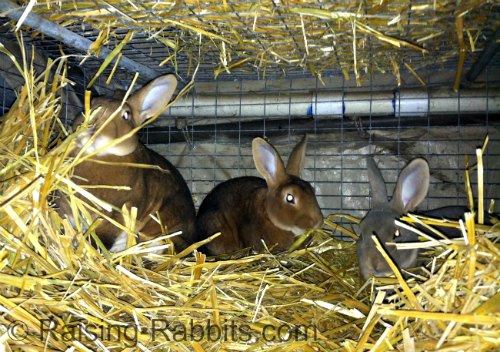
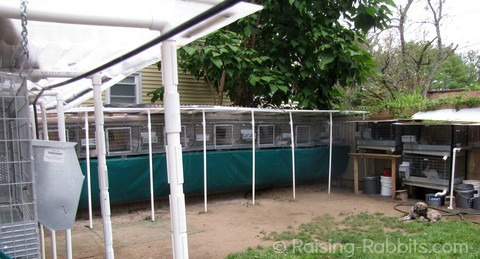
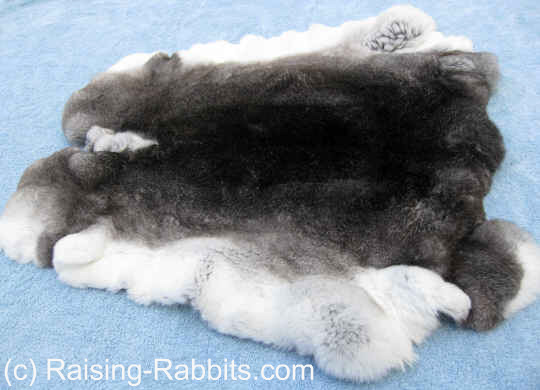








New! Comments
Have your say about what you just read! Leave me a comment in the box below.